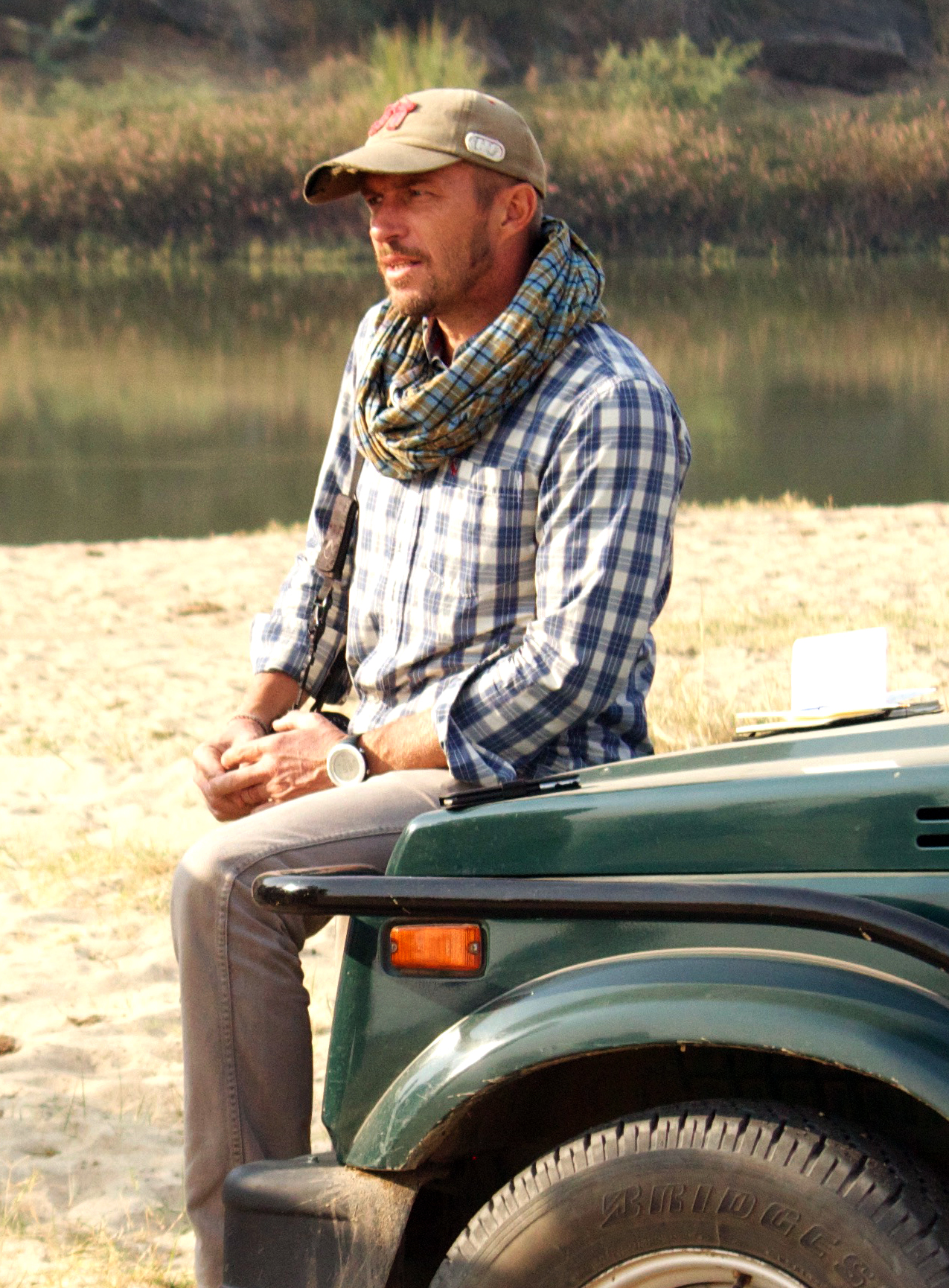Even on a bright, sunny day there’s something ominous about the Komodo archipelago. It’s as if the islands are trying to live up to the legend of their dragons.
Sailing east from Bali across the famous Wallace Line, you pass the jungle-clad peaks of Sumbawa and the soaring cone of Sangeang volcano before entering a tangle of islands that seems to be cut off from the world by the treacherous currents notorious among sailors.
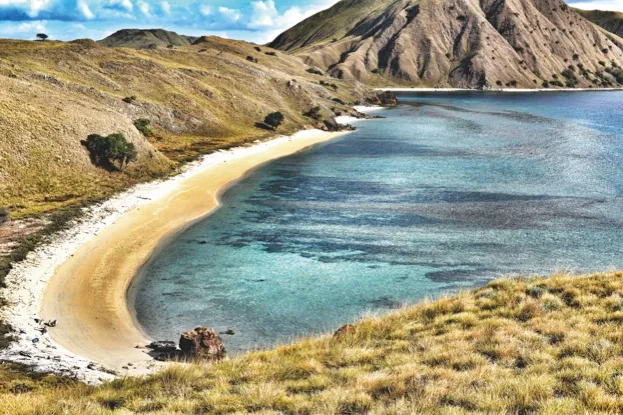
Despite being world famous for its dragons, the Komodo archipelago boasts dozens of outlying paradise islets that rarely see a human's footprint © Mark Eveleigh
Then the sun-burned, savannah hills of Komodo island rise on the horizon, appearing more African than lush Indonesian. They are stubbled with prehistoric-looking lontar palms. Locals on neighbouring Flores island tap these palms to make a sort of arak with the unlikely name of sophie. On Komodo, however, people don’t venture into the hills unless strictly necessary.
“A big ora killed a goat here yesterday,” an old man tells me as we walk along the rickety timber jetty into Komodo village. Ora is the local name for the Komodo dragon, Varanus komodoensis, and seems almost to have been designed to be barked as an alarm call. The village elder, who introduces himself as Pak Man, describes how ora frequently enter the settlement through its old cemetery, tempted by the goats grazing among the tombs.
“In 2007, a 10-year-old boy was disembowelled by a dragon hiding near where he was playing football,” Pak Man tells me. “Since then there have been more than a dozen attacks, and it seems that the dragons are becoming more aggressive.”
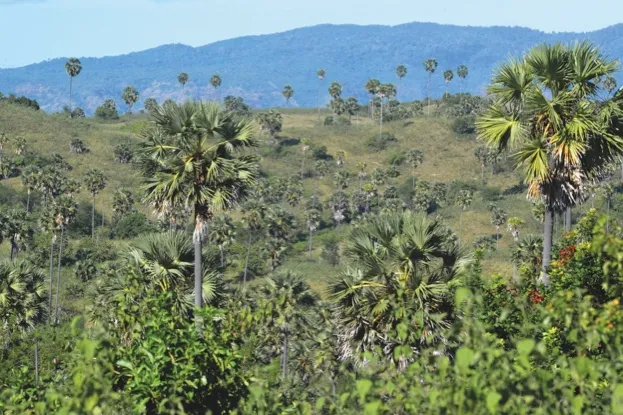
The komodo dragon is endemic to five volcanic islands in Indonesia © Mark Eveleigh
Through a gap in the ramshackle stilted buildings, I can see the boat that brought me here – the appropriately named Dunia Baru (‘New World’) – swinging at anchor.
I feel vaguely guilty that I can retreat into luxury onboard while the people of Komodo face another night in the domain of the world’s largest venomous reptile. “We don’t need tales of Jurassic Park and velociraptors to see a reptile-dominated world,” Sir David Attenborough said of the islands he first visited in 1956. “It’s all here.”
Getting the facts straight
In the years after Attenborough’s visit there was little serious scientific research into what has become Indonesia’s most celebrated super-predator. In 1969, American ecologist Walter Auffenberg spent a year in these islands, and after observing dragons administering fatal bites to buffalo, he suggested – without any data to substantiate his claim – that the dragons carried deadly bacteria in their mouths.
The story gained traction until the bacteria theory was assumed to be fact, much as fire-breathing monsters had been accepted by earlier generations.
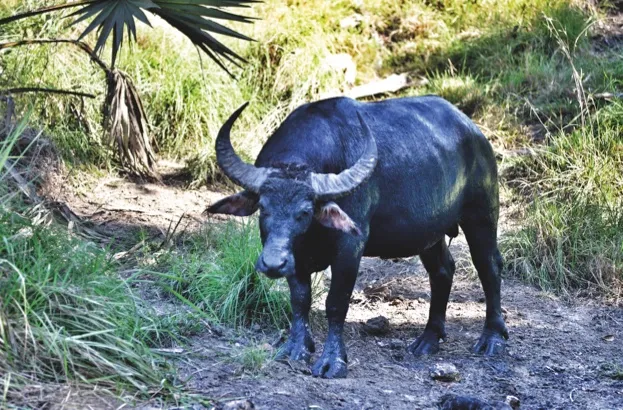
Buffalo are a prey item of komodo dragons © Mark Eveleigh
“Extraordinary claims require extraordinary evidence,” says Bryan Fry, a scientist at the University of Queensland, “and bacteria-as-a-weapon would have been an unprecedented form of predation strategy. Yet it was instantly accepted simply because it was enchanting … just like most fairy tales.”
It’s a mark of the Komodo archipelago’s remoteness – and the logistical complexities of research in Indonesia – that it was several decades before biologists established that Varanus komodoensis has venom ducts in its jaws. Dr Fry, a world authority on venom, isolated five individual toxins in dragon venom in 2009.
They provoke painful cramping, anti-coagulation, dramatic drop in body heat, haemorrhage, heightened sensitivity to pain, shock and unconsciousness. On an island dominated by 85kg-lizards that can smell blood more than 4km away, any of these symptoms might lead to death.
Fry believes that it is a combined “grip, rip and drip” technique that eventually spells the demise of even large prey. “The role of the venom is to exaggerate blood loss and the shock-inducing mechanical damage caused by the bite,” he says. Rather than clamping with powerful jaws, a dragon shreds with serrated teeth and pulls with powerful neck muscles to open gaping wounds to the effects of venom.
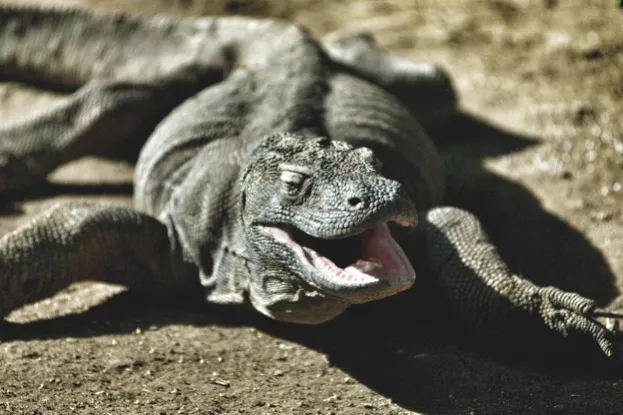
A dragon's jaws are capable of crushing the thick bones and hooves of big buffalo © Mark Eveleigh
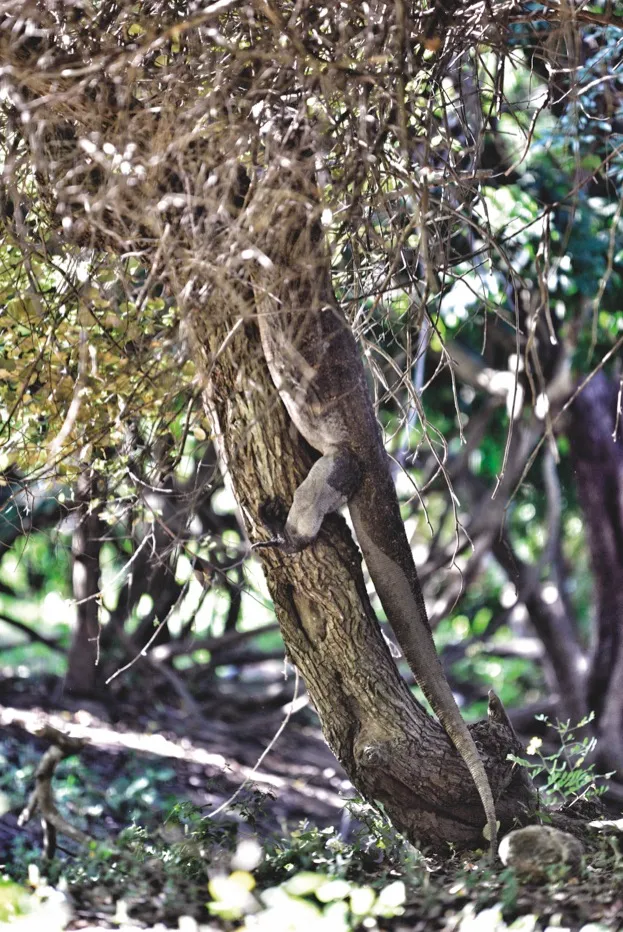
Until they are about two yers old, dragons spend most of their time in trees. Full grown dragons are considered too heavy to climb but (as you can see here) during the excitement of a hunt they are capable of chasing monkeys into the trees © Mark Eveleigh
As effective as this “grip, rip and drip” technique is, the jury is still out on exactly how dragons kill large prey such as the water buffalo and wild horses they hunt on Rinca island. The former weigh up to 600kg.
“Although Komodo venom has been shown to have strong physiological effects on lab rodents, we still don’t know how effective these toxins are in killing the much larger and, importantly, co-evolved prey that dragons eat in the wild,” says Tim Jessop, an ecologist at Australia’s Deakin University.
Sharing space
With more than 15 years’ research experience in the archipelago, Jessop acts as a scientific advisor to the Komodo Survival Program (KSP) and is one of the world’s foremost dragon experts. “Unlike large mammalian predators, dragons exist at relatively high densities and have overlapping home ranges,” he explains. “This means that there may be a strong emphasis on rapidly dispatching and killing large prey before competitors arrive. Venom would definitely be a benefit in this.”
Jessop’s primary study was a four-year stint of trapping and tagging on the main Komodo National Park islands of Komodo, Rinca, Nusa Kode and Gili Motang. As I set off into one of Rinca’s densely forested valleys with a ranger called Yadi, my mind was uncharacteristically occupied with mathematical problems.
Jessop’s team estimated the Park’s dragon population to be around 2,500. But little Rinca, less than two-thirds the size of Komodo, is actually home to more dragons than her neighbour. Moreover, since dragons tend only to occur in favourable habitat, it followed that this forest might have 10 or 11 dragons per square kilometre.
“When we walk here, we always keep an alert eye open,” says Yadi. “You never see the dragon that gets you, though.” It doesn’t escape my notice that Yadi’s only form of defence is a cleft stick. Another thing I’ve spotted is that he’s wearing a very sporty pair of running shoes.
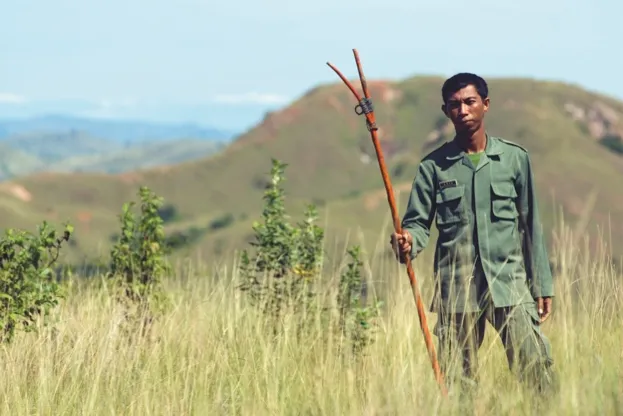
A cleft stick is the only line of defence against dragon attacks for a Komodo National Park Ranger © Mark Eveleigh
The dragons that lie around the National Park HQ on Rinca are often dangerously underestimated by visitors as “fat, lazy lizards”, but I feel tense. I’ve never felt this way in big-cat territory. Lions, tigers, leopards and jaguars tend to have a healthy fear of humans, whereas I’ve heard that a dragon may ambush whenever an opportunity arises. Even a smaller dragon might attempt to inflict a nasty bite on a passing human that is likely to be fatal.
As Yadi and I stood quietly watching a huge dragon lumbering across the track, some reassuring words from Jessop sprang to mind: “Dragons are cold-blooded so, unlike mammals, the frequency with which they need to kill is low,” he said. “Hence the number of attacks is likely to be lower… Dragons probably aren’t actively hunting humans, but if a person gets in the way of a hungry one… well, what’s not to like from a dragon’s culinary point of view?”
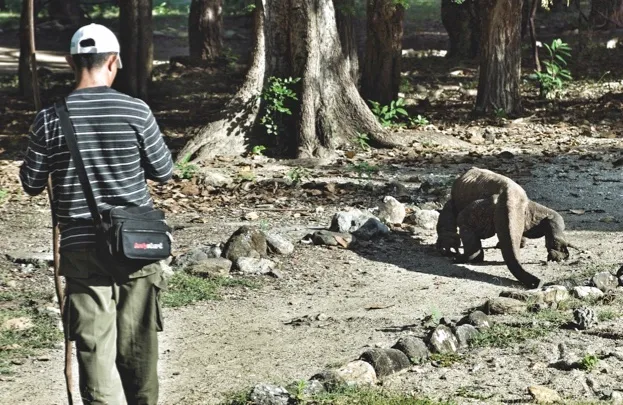
Tourists who value their lives must not get too close to dragons. The apex predators can attack at lightning speed © Mark Eveleigh
Spilled blood
When I had earlier sailed to Rinca in 2013, there had been five attacks on the island in the previous five months. I spoke to the family of an old woman called Ibu Haissa, who had been bitten on the hand and was in hospital replacing the blood that was still splashed under her hut. In another incident the previous month, two rangers were bitten during what escalated into a feeding frenzy at the park headquarters on the island.
In May 2017, 50-year-old Loh Lee Aik from Singapore was badly bitten on the leg, apparently after ignoring warnings not to get too close when taking photographs. It was the first attack on a tourist since 1974, when a traveller was killed.
“There have been 31 attacks by dragons in Komodo National Park since records began in 1974,” says Achmad Ariefiandy, KSP research director, “but only five fatalities. Most attacks happen near villages or tourist sites because the dragons aren’t afraid of humans.” It’s almost certainly due to this growing habituation that attacks are increasingly common; KSP figures show that half of the recorded attacks (resulting in two deaths) have taken place in the last decade.
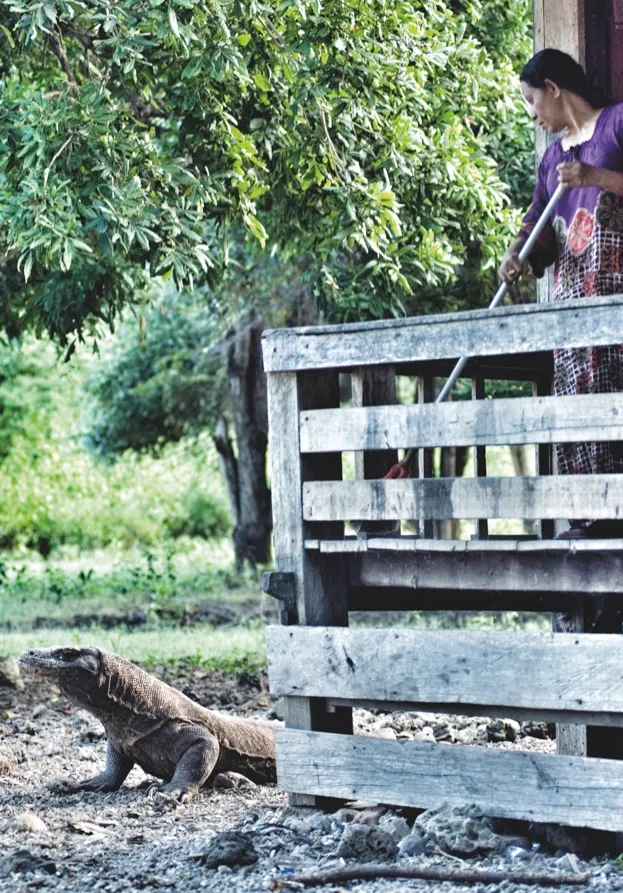
Komodo dragons are habituated to humans, and are often attracted to villages by the scent of drying fish © Mark Eveleigh
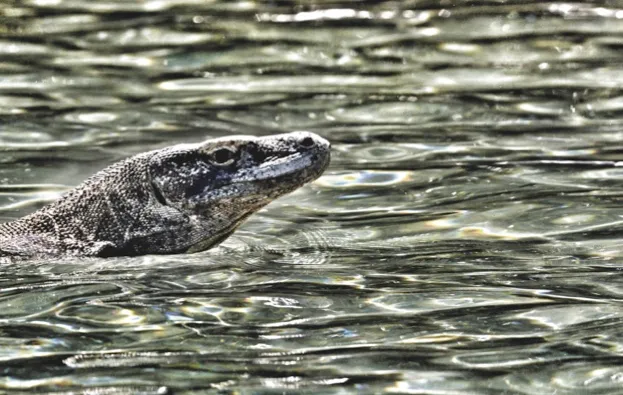
Dragons are strong swimmers and will enter the water to hunt or scavenge © Mark Eveleigh
After the spate of attacks in 2013, the park services and KSP came up with a plan. In 2014, three aggressive dragons were translocated from Rinca to tiny, 5km-long Padar island. When Auffenberg visited Padar almost half a century ago, he estimated a population of around 60 dragons, but by the 1980s they were considered extinct there – probably due to poaching of Timor deer, their preferred prey on the island.
Unfortunately, nobody thought to inform tour operators and boat-charter companies that the one place where they considered that their clients could wander had become a sort of penal colony for the delinquents of the dragon world.
Visiting Padar in 2015, I landed on a perfect arc of white sand that, at first glance, was totally unmarred by footprints. Then I noticed a ribbon of churned sand, running like a single bulldozer-track across the edge of the beach. Jagged claw marks were etched at intervals alongside the swaying zigzag of the tail of what must have been at least a two-metre dragon. I was astounded to see evidence of its passage across a beach that cruise guests often used as a picnic site and sunbathing spot.
“I’m not sure how many dragons are on Padar at the moment,” says Ariefiandy, who oversees day-to-day conservation and monitoring activities for KSP. “We got Komodo images on two camera-traps there, so there are still some around.” Returning to Padar in April this year, we anchored Dunia Baru in a bay near the island’s southern tip, and again noticed unmistakable dragon tracks on the beach.
Single Parents
Komodo dragons have a habit of cropping up when you least expect them. KSP recently discovered a hitherto unknown dragon population on a tiny remote island off the north coast of Flores called Longos. Nobody is sure how or when dragons arrived there, but researchers are coming to understand that these unique reptiles are capable of incredible feats of survival.
There have been two documented cases of ‘virgin birth’ among dragonswhen females (one in Chester Zoo and one in London Zoo) hatched healthy young even though they had never even seen a male.
“We don’t yet know the role that parthenogenesis plays in wild dragon populations,” Jessop admits. “But theoretically it could provide a means by which female dragons could establish populations on unoccupied islands. The likelihood of long-term occupation would depend on the clonal population being genetically robust enough to survive.”
It seems that the mystery of the Komodo dragons is far from played out. Sometimes the truth is even stranger than a fairy tale.
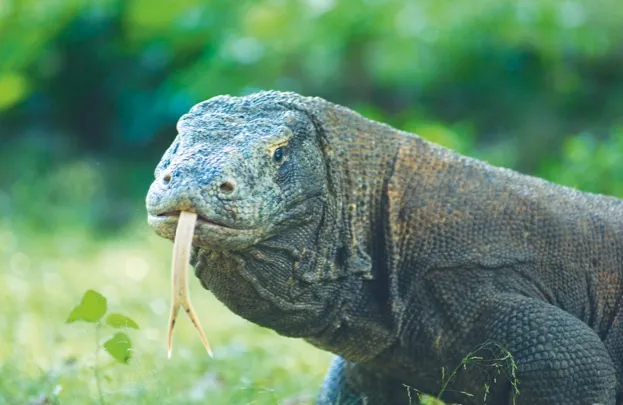
There are over 70 monitor lizard species in the genus Varanus, including the komodo dragon © Mark Eveleigh
How to see Komodo dragons
The giant lizards occur on several islands, including Komodo, Rinca, Nusa Kode, Gili Motang and Padar in Komodo National Park, and parts of nearby Flores and Longos.
Cruising
- The Dunia Baru is based in Komodo April–September. The boat berths 14 guests in high comfort, and is the most exclusive way to visit these islands.
- Natural World Safaris has a 7-day cruise on a luxury tall-ship for £71,500 (to charter the ship, with berths for 16) includes transfer from Labuan Bajo, meals, excursions, use of jet and water-skis, sailing dinghy and dive guide. Flights not included.
Tour Operators
- Backyard Travel offers ‘Spectacular Flores and Komodo' – 7 days inc walking in the footsteps of dragons.
- Intrepid Travel has an 11-day Komodo and Flores trip.
- Steppes Travel offers bespoke Flores and Komodo tours.
- Naturetrek has a 13-day ‘Bali to Komodo’ tour.
Find out more about the Komodo Survival Program.
Update: In July 2019, the Indonesian government announced that it would close Komodo Island, banning tourism and relocating residents, in order to protect Komodo dragons.
Mark Eveleigh is a writer and photographer who has visited the Komodo archipelago seven times.
Main image: The size of komodo dragons is often said to be an evolutionary adaptation to enable them to prey on pygmy elephants that are now extinct. However, experts believe it probably pre-dated the dragons’ arrival in the islands. © Mark Eveleigh
This article originally appeared in BBC Wildlife. Take a look inside the current issue and find out how to subscribe.
